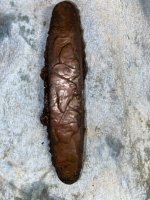lionking
Tenderfoot
After 3 hours walking in the mountain trail leading to the hinterlands of Camanlangan, a gold producing region in Compostela Valley Province in Mindanao, we reached our campsite hoping to find a goldmine prospecting area. As we sipped our coffee, a miner from another outfit approached me and drank coffee w/ us. The discussion was changed from gold prospecting to treasure hunting.
He told me that their team is excavating for treasure down in the Visayas Area found a Metal Boxes inside a WW2 concrete bunker in the island of Bohol back in 2007. He added that maybe I could help their group headed by his uncle to find a buyer for their find, I assured him why not, provided I have to see these items first.
Hurriedly I left my group and headed to his uncles' house in Nabunturan Municipality where they kept the items. He then introduced me to his uncle who in his 70s seems so suspicious on anynew face that goes to their frontyard. After awhile of convincing that I can contact a buyer, (actually I'm just only curious to see what they've found) he took a metal box and showd it to me.
The box weighs around 8-10 kls, 65mm thick x 250mm wide x 400mm long by my estimate. The box is made of Steel, or maybe aluminum and the front cover is made of Bronze w/ U S of A markings and eagle clasping arrows and leaves in his talons. Honestly, I havent had the slightest idea what the box is hiding inside so I told them, we'll open this box who knows there are jewelries or small bars inside. After 45 minutes we were able to destroy the box using pliers, hammer and screwdriver and what we found inside are only a set of bank documents e.g. $deposit certificates,
greencards,a sheet of film and 250 pcs. Federal Reserve Notes dated 1934.
Now, my question is:
1) Why this docs was hidden inside a war bunker when its proper place should be inside the
vaults of the Federal Reserve bank in the US?
2) There's a Gold Certificate in the docs showing a deposit of tons of Gold! is it still there in the
Bank Depository?
3) In the Dollar deposit certificate, it shows that Billions of Dollars has been deposited in the
Fed Res Bank of Atlanta redeemable after 33 years w/ earning an interest of 4% per annum.
BUT its already 75 years from 1934, the date when this was issue, is this expired?
4) How did this Bank Documents landed in the Philippines? I'm sure its not by accident it found its
way inside a bunker, it must be part of a war loot. As in spoils of war, isnt it?
5) Why there are greencards inside? I used to think that if u wanna go 2 the US one has to have a
greencard, this one is different. What does it stands for?
If there's somebody out here who's very knowledgeable w/ this find, can you please enlighten me on this?
thanks,
LK
He told me that their team is excavating for treasure down in the Visayas Area found a Metal Boxes inside a WW2 concrete bunker in the island of Bohol back in 2007. He added that maybe I could help their group headed by his uncle to find a buyer for their find, I assured him why not, provided I have to see these items first.
Hurriedly I left my group and headed to his uncles' house in Nabunturan Municipality where they kept the items. He then introduced me to his uncle who in his 70s seems so suspicious on anynew face that goes to their frontyard. After awhile of convincing that I can contact a buyer, (actually I'm just only curious to see what they've found) he took a metal box and showd it to me.
The box weighs around 8-10 kls, 65mm thick x 250mm wide x 400mm long by my estimate. The box is made of Steel, or maybe aluminum and the front cover is made of Bronze w/ U S of A markings and eagle clasping arrows and leaves in his talons. Honestly, I havent had the slightest idea what the box is hiding inside so I told them, we'll open this box who knows there are jewelries or small bars inside. After 45 minutes we were able to destroy the box using pliers, hammer and screwdriver and what we found inside are only a set of bank documents e.g. $deposit certificates,
greencards,a sheet of film and 250 pcs. Federal Reserve Notes dated 1934.
Now, my question is:
1) Why this docs was hidden inside a war bunker when its proper place should be inside the
vaults of the Federal Reserve bank in the US?
2) There's a Gold Certificate in the docs showing a deposit of tons of Gold! is it still there in the
Bank Depository?
3) In the Dollar deposit certificate, it shows that Billions of Dollars has been deposited in the
Fed Res Bank of Atlanta redeemable after 33 years w/ earning an interest of 4% per annum.
BUT its already 75 years from 1934, the date when this was issue, is this expired?
4) How did this Bank Documents landed in the Philippines? I'm sure its not by accident it found its
way inside a bunker, it must be part of a war loot. As in spoils of war, isnt it?
5) Why there are greencards inside? I used to think that if u wanna go 2 the US one has to have a
greencard, this one is different. What does it stands for?
If there's somebody out here who's very knowledgeable w/ this find, can you please enlighten me on this?
thanks,
LK
Attachments
Upvote
2


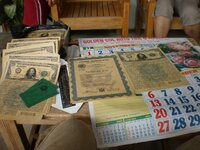
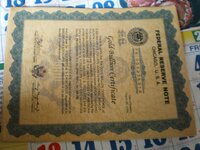
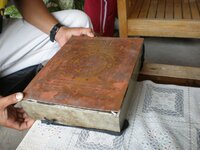
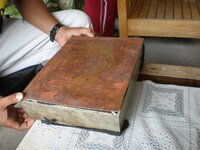
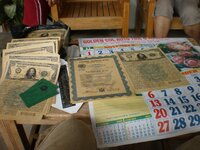
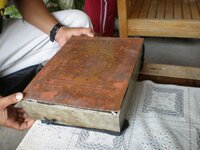
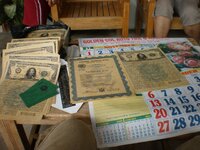



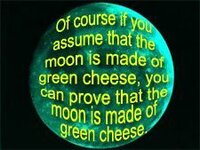




 Huh??
Huh??

